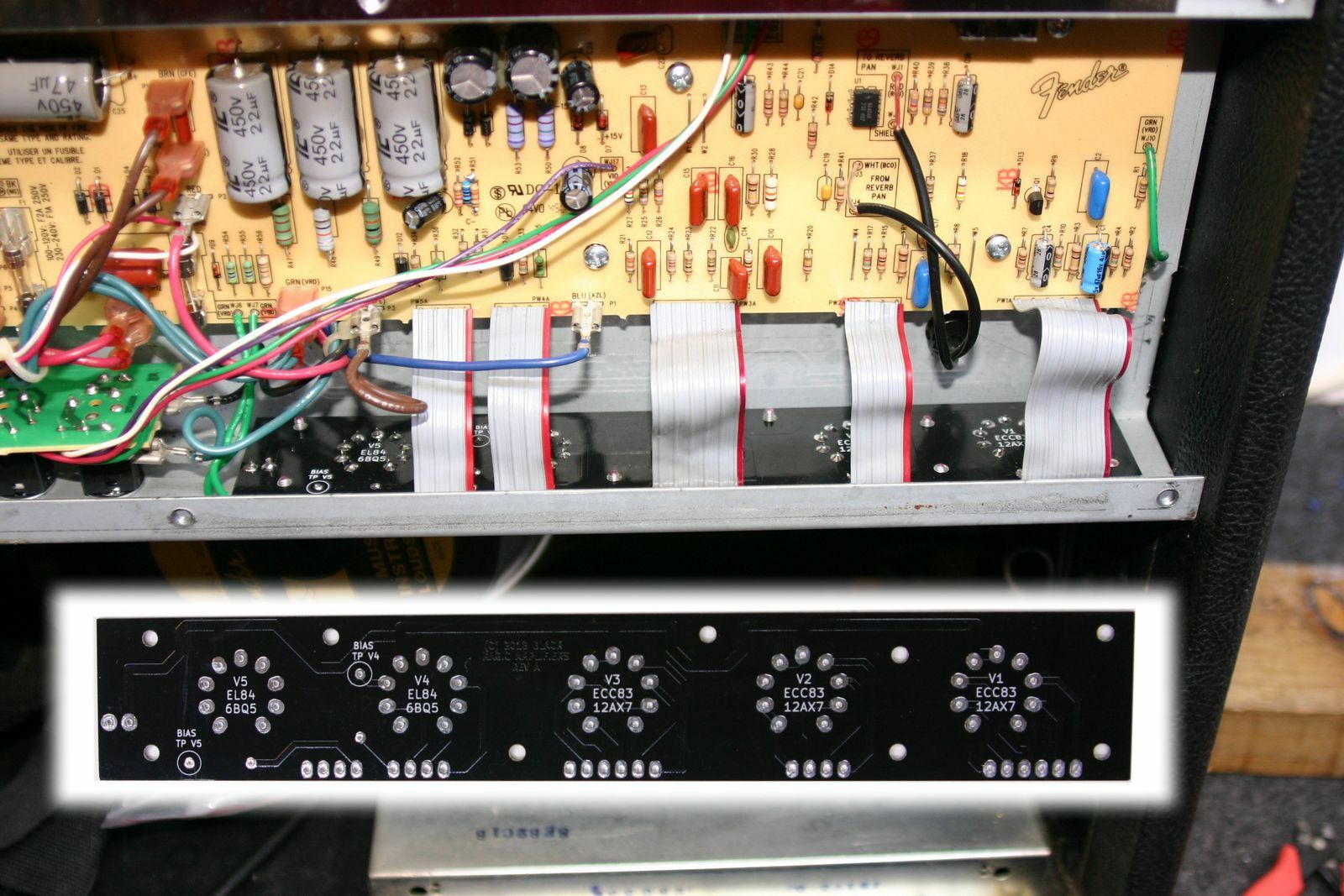-40%
Complete Fender Blues Junior FBJ Tube Valve PCB Board with Bias Test Points
$ 13.08
- Description
- Size Guide
Description
Complete Fender Blues Junior FBJ Tube Valve PCB Board with Bias Test PointsThis product data sheet is originally written in English.
Note there are different versions for Blues Junior MK 1,2, 3 & 4
early
V1 Blues Juniors. The MK1, 2 & 3 have a cream main board. The MK4 has a green main board. The early V1 type also has a green main board but
has the power indicator wires going to the tube PCB so take a look at yours to see. M
ake
sure
you select the correct version.
There are four variants:
1) Basic MK 1 to 4 with bias test points
2) Premium
MK 1 to 4 with bias test points and gold sockets and bias adjustment mod kit
3)
***NEW*** MK 1 to 4 with bias test points and bias trimmer on board
4) Basic Early MK1 "green board" with bias test points
Features
In the images above you can see what can happen when the main tube PCB fails in a Blues Junior - ouch! Here is a solution to prevent that from happening or to replace a PCB on which the pads have started to lift.
The original manufacturer's PCB is single sided, i.e. has copper on the solder side only. The EL84 tubes run very hot in these and this weakens the glue that attaches the copper foil to the substrate material. The original substrate does not appear to be FR4 glass fibre but possibly an inferior composite such as SRPB. When the glue fails the heavy tube & socket is free to vibrate and soon the attached copper track fails due to metal fatigue. You hear crackles, popping and/or a loss of power or you can even get arcing and completely destroyed boards. When that happens the PCB needs replacement. In the pics above you can see examples of arcing failures.
The replacement PCBs are designed to drop in and are made from a reinforced glass fibre substrate FR4. They also use a double-sided copper foil with plated through holes. This overcomes the glue failure issue.
Durable Glass fibre reinforced FR4 material
Prevents glue failure issues by using double-sided PCB with plated through holes with generous pad sizes.
Prevents arcing due to careful attention to creepage and clearance distances
Drop in replacement is cheaper and much easier to wire in than hand-wired metal plate alternatives
Bias current measurement test points make tube replacement easier 1mV/mA
Just remove the old PCB, unsolder the wires and attach to the new one.The board is preassembled with valve sockets and resistors. (You will need to solder on the trimmer (supplied) for the bias-on-board version yourself.
No need to remove the main circuit board.
Heatproof ceramic tube sockets
Much faster to upgrade than hand-wired solutions as the wiring has been done for you
Better than uncertain hand-wiring as the location of 'wires' is fixed and optimised for you giving repeatable results. Greatly eliminates the chance of expensive miswiring errors
Incorporates resistors for measurement of bias current on each EL84
Oversized holes to make re-wiring easier
Heater tracks optimised to reduce hum. No hand wiring of heater wires needed
Instructions included. Anyone with decent soldering/desoldering skills can do this.
Increase/preserve the value of your amp
There are lethal voltages inside these amplifiers. Always exercise extreme caution to avoid the risk of electric shock. If in any doubt refer to a qualified technician. Fitting and use of these parts is entirely at your own risk. No exceptions.
Note there are different versions for Blues Junior MK 1,2, 3 & 4 early V1 Blues Juniors. The MK1, 2 & 3 have a cream main board. The MK4 has a green main board. The early V1 type also has a green main board but has the power indicator wires going to the tube PCB so take a look at yours to see. Make sure you select the correct version. The original manufacturer's PCB is single sided, i.e. has copper on the solder side only. The EL84 tubes run very hot in these and this weakens the glue that attaches the copper foil to the substrate material. The original substrate does not appear to be FR4 glass fibre but possibly an inferior composite such as SRPB. When the glue fails the heavy tube & socket is free to vibrate and soon the attached copper track fails due to metal fatigue. You hear crackles
Brand
Mox











